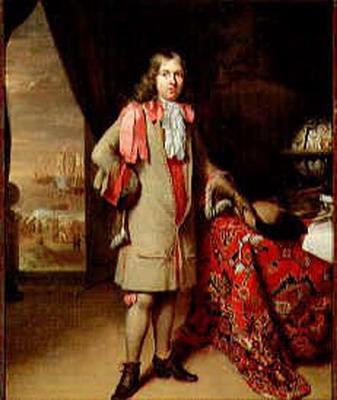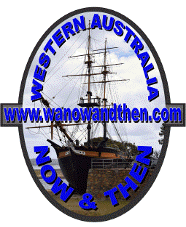|
De Vlamingh's log talks about the island as follows: 'I felt great pleasure in admiring the island, which is a very pleasant place. Here it seems nature
has spared nothing to render this isle delightful above all others I have ever seen. It is well disposed for the support of man, having wood and stone and
lime for building houses, and wanting only labourers to cultivate these fine plains where one finds salt in abundance, while the coast swarms with fish.
There one hears the chatter of birds, which makes these odorous woods resound with their sweet songs.'
The word 'odorous' is a bit misleading, as in English it tends to mean smelly, De Vlamingh actually meant perfumed.
Next Vlamingh explored and named the Swan River after the large flocks of black swans which inhabited the area. The original name was actually Swartte
Swaane Drift, Black Swan River, (quoted as Swaanerivier in some sources).
As black swans were unknown in Europe he ordered his men to catch some and three were taken aboard ship. Sadly they died soon after reaching Java.
As they explored the area around the Swan River some of the crew ate Zamia Palm nuts, they had probably seen the remnants of these in Aboriginal campsites.
Unfortunately for the crew, they did not know how to properly prepare the nuts and were very ill as a result. They had also tried to make contact with the
local Aborigines but were never able to get more than just a glimpse of the elusive locals.
After completing the exploration of the Swan River and finding nothing of value the expedition continued north along the coast to the Shark Bay area. He named
Steep Point (Steyl Hoeck) and landed on Dirk Hartog Island where the inscribed plate left by Hartog was found. The plate was taken aboard the Geelvinck
and Vlamingh had his own plate inscribed and placed up on the cliff. 104 years later the plate left by Vlamingh was found by a sailor from the French ship
Naturaliste. 17 years on, another Frenchman, Louis de Freycinet, found it again and removed it but it was then lost. (The plate was re-discovered in 1940
and was eventually returned to W.A.)
The expedition sailed north once more to North West Cape but the land became even more barren and hostile. After he sailed away there are few clues to what became
of Vlamingh when he returned home. Vlamingh had not been impressed with the south land and wrote: 'I found neither good country, nor did I see anything of note.'
No references to Vlamingh can be found after 1698 and it is presumed that he may have died then or shortly afterward. Nicholas Wittsen, one of the most senior
Directors of the V.O.C., wrote scathingly that Vlamingh had been 'overmuch inclined to drinking... ...not gone much ashore... ...stayed nowhere longer than
three days...' and '...wasted his time at the Cape with feasting and merrymaking.'
Some time later Vlamingh's efforts in mapping the west coast of Australia were finally recognised as having much merit.
* - Vlamingh's date of death is unknown. He may have lived past 1698 but there are no records to confirm this.
Chronology
1640 - Baptised November 28th.
1664 - Sailed to Nova Zembla.
1668 - Married Willempie Cornelison December 2nd.
1688 - Joined the VOC Dutch East India Company.
1688 - First voyage to Batavia November 26th.
1690 - Returned to Holland in May.
1694 - Second voyage to Batavia January 7th.
1695 - Returned to Holland August 23rd.
1696 - May 3rd. Commanded a rescue mission to Australia's west coast to look for survivors of the Ridderschap van Holland.
1696 - Sighted Rottnest Island on December 29th. (Landed on the 31st.)
1697 - Explored some of the mainland from January 5th and went up the Swan River on January 10th.
1697 - Sailed north on January 13th.
1697 - Landed on Dirk Hartog Island on February 4th.
1698 - Sailed for Holland from the East Indies of February 3rd.
1698 - Ships arrived in Amsterdam on August 16th.
1698 - Thought to have died around this time and it is unknown whether he arrived with his ships.
Links to more information:
Willem de Vlamingh
Vlamingh, Willem de (?-?)
Willem De Vlamingh
|


